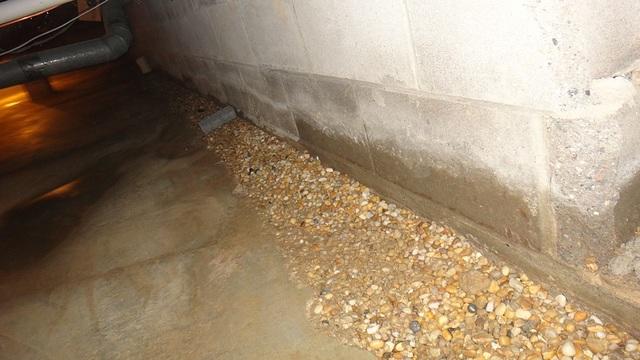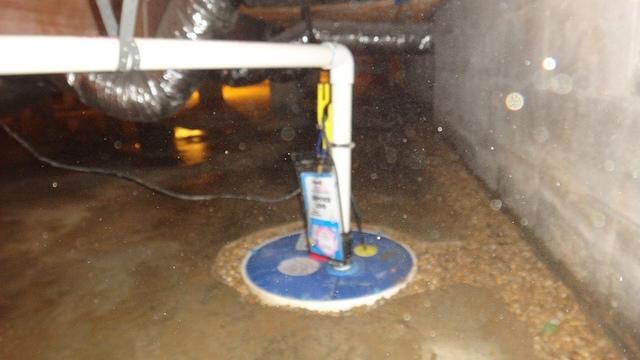Ron H. - Concrete floor in a crawlspace with major water problems
Challenge
Not every crawlspace has a dirt floor, some are pored concrete. This house in Talbot County, Maryland has a crawlspace that is almost always flooded. The homeowner was plagued by nasty smells and high humidity. The biggest challenge when waterproofing a concrete crawlspace is that the crew can't dig the trenches with shovels like in a dirt crawlspace. The concrete has to be removed to make room for the Hydrolink pipes, but a jackhammer is too tall to be used. In this house, the perimeter drainage system was over 300 feet long. Can you imagine trying to chip away at over 300 feet of concrete while crawling on your knees in a tight space? One of the other challenges with a concrete crawlspace is that there is no place to spread out the dirt removed for sump pumps and trenches.
Solution
The solution is to use smaller tools. The crew used a combination of saws, hammer drills, and chisels to create the long and winding trench. But what to do with all the chunks of concrete and pounds of dirt from the sump pump pits? Everything has to be removed by hand in small trays. It is important to remember that this is not an easy task and that DryZone crew members work very hard to maintain a high level of excellence. Once the trenches are cut and the pipe is fitted in place they have to bring in the stone, once again 100% by hand with small trays. The end result is a wonderfully looking and highly efficient crawlspace drainage system.
Project Summary
SuperSump: basement/crawlspace sump pump system
Hydrolink: crawlspace drainage pipe
IceGuard: drainage pipe proctection




